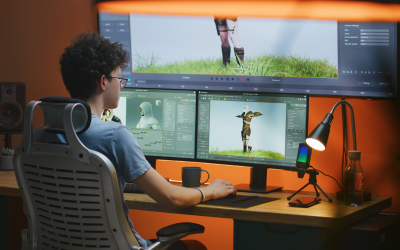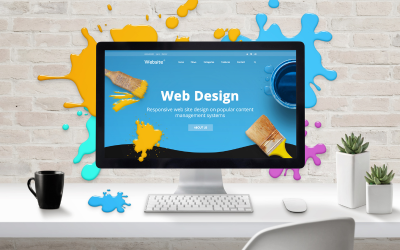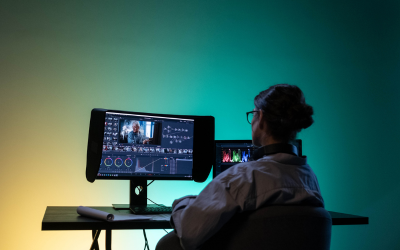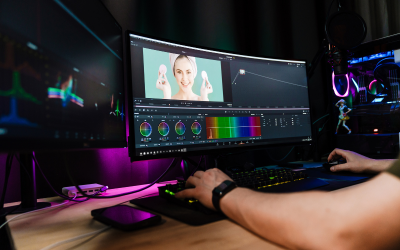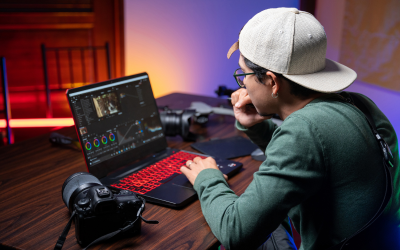Course description
Highlights:
- Introduction to Animation: Learn the basic principles of animation and the history of animationtechniques. - Traditional vs. Digital Animation: Explore the differences between traditional hand-drawn animationand modern digital techniques. - Character Design and Storyboarding: Learn how to design characters, plan animations, and createstoryboards for your projects. - Keyframing and Motion Graphics: Master keyframing techniques and explore how to create smoothmotion graphics. - Animation Software: Get hands-on experience with popular animation tools and software for
creating digital animations. - Advanced Animation Techniques: Learn about rigging, 3D animation, and special effects to takeyour animations to the next level.
Course Objective:
By the end of this course, you will be able to: - Understand and apply the fundamental principles of animation. - Create characters, backgrounds, and props for animation projects. - Use keyframing and motion graphics techniques to create smooth and realistic animations. - Use industry-standard animation software to produce professional-quality animations. - Storyboard and plan animations, understanding the importance of timing, movement, and
sequence. - Incorporate advanced techniques such as rigging, 3D animation, and visual effects into your
animations.
Course Structure:
1. Introduction to Animation
- Overview of the history and evolution of animation. - Introduction to the 12 principles of animation (squash and stretch, anticipation, staging, etc.).
- Understanding timing, spacing, and motion in animation. - Exploring the differences between traditional 2D, stop-motion, and 3D animation
2. Traditional Animation Techniques
- Introduction to hand-drawn animation techniques and cel animation. - Creating and animating basic shapes and objects. - Understanding the importance of frames per second (FPS) and timing in traditional animation. - Developing smooth transitions and natural movements through drawing sequences. - Creating flipbooks and short animated sequences.
3. Digital Animation Fundamentals
- Introduction to animation software (e.g., Adobe Animate, Toon Boom, Blender). - Basic tools and interface of animation software. - Learning to create 2D digital animations using keyframes and motion tweens. - Importing assets, including characters and backgrounds, into digital projects. - Creating simple animations with timing and easing for smooth motion.
4. Character Design and Storyboarding
- Techniques for designing unique and appealing characters for animation. - Creating character turnarounds and character sheets. - Understanding the principles of character movement and personality. - Introduction to storyboarding: planning and organizing scenes. - Creating a storyboard for a short animation project, focusing on pacing and shot composition.
5. Keyframing and Motion Graphics
- Mastering keyframe animation and understanding in-betweens. - Creating smooth and fluid animations with motion graphics. - Introduction to motion paths and easing techniques. - Working with animation curves to control the flow of movement. - Applying motion graphics to logos, titles, and text animations
6. Advanced Animation Techniques
- Introduction to 3D animation and working in 3D space. - Rigging characters for animation: bones, joints, and skinning. - Creating realistic movements and expressions with character rigs. - Learning how to incorporate physics-based animation (gravity, collision, etc.). - Adding visual effects like particle systems, smoke, and explosions to animations.
7. Visual Storytelling and Sound Design
- Understanding the role of sound and music in animation. - Synchronizing audio with animation for timing and emotional impact. - Techniques for sound design and voice acting in animation. - Crafting a cohesive narrative through animation, from concept to final sequence. - Using visual storytelling techniques to enhance character and plot development.
8. Exporting and Final Output
- Understanding export settings for different platforms (film, web, mobile, etc.). - Rendering animations in various formats and resolutions. - Creating animation loops and GIFs for web use. - Optimizing animation for mobile devices, social media, and online platforms. - Creating an animation reel to showcase your work.
Learning Methodology:
- Interactive Lessons: Learn animation techniques through tutorials, step-by-step demonstrations, and examples. - Practical Projects: Apply your skills with hands-on projects, including short animation sequences, character designs, and storyboards. - Assessments and Quizzes: Regular quizzes and assignments to test your knowledge of animationprinciples and techniques. - Live Sessions: Participate in live Q&A sessions for personalized feedback and to clarify doubts. - Discussion Forums: Engage with fellow students and instructors to share ideas, discuss challenges, and improve your skills.
Who Should Enroll:
- Beginners looking to get started in the world of animation. - Aspiring animators, graphic designers, or visual artists who want to expand their skill set. - Content creators, video producers, or filmmakers looking to incorporate animation into their
projects. - Students interested in pursuing a career in animation, gaming, or digital arts. - Anyone interested in learning how to create engaging animations for personal, academic, or
commercial use.
This Animation course will provide you with the fundamental skills needed to create high-qualityanimations, whether you're working on character animation, motion graphics, or 3D animation. Whether you aim to work in the entertainment industry, as a freelance animator, or in digital
marketing, this course will give you the tools and knowledge to bring your creative visions to life

